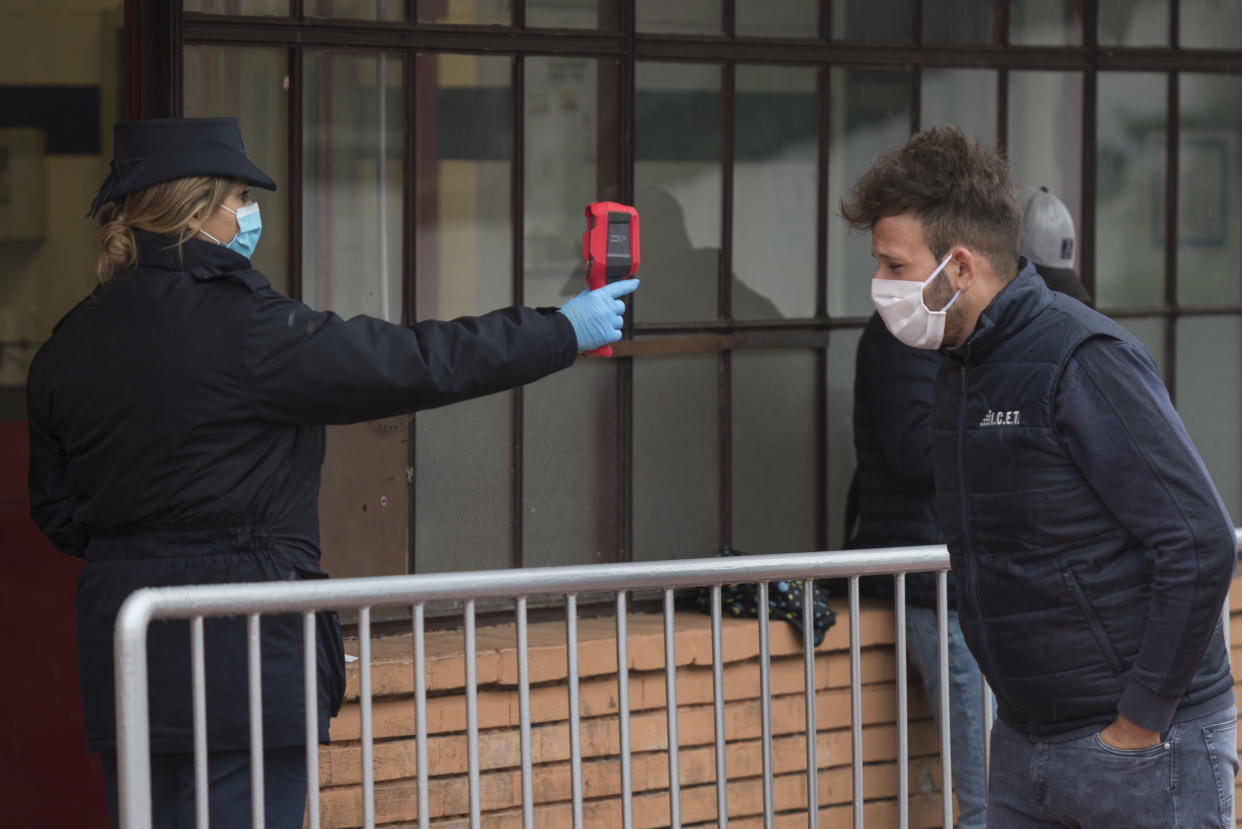Temperature scans at Canadian businesses raise questions of civil liberties

As businesses prepare to open up while fears of contracting COVID-19 still linger, some are taking steps to try to reduce the risk of spread by using thermal technology to identify potential carriers.
In Vancouver, a locally-owned liquor store has installed a thermal camera system, while a large grocery chain is using handheld temperature scans at the point of entry.
“We thought this was the best, the safest and the most consistent way to screen people,” said Abri van den Berg, General Manager of Value On Liquor Store in Vancouver.
Last Friday, van den Berg had the dual camera system installed which he said is approved by Health Canada as it measures the body temperature of anyone entering the store by scanning their forehead.
“It helps us to screen customers and employees to not have anyone in the store who has an elevated body temperature like a fever,” said van den Berg.
The two camera system relays audible notifications of someone with an elevated temperature to staff, and also pings van den Berg’s cellphone.
“We’ve positioned it by the entrance to the store, so it is scanning people as they’re coming in, so if anyone has a temperature of 37.5 degrees or more it’ll give a warning. A warning over 38 would give an alarm,” he said.
Once staff are then notified of the person, they are then advised to ask the person to leave the store.
“We would politely ask that person to leave the premises, if their body temperature is that high, they’re clearly running a fever, it might not be coronavirus, but they need medical help,” he said.
Van den Berg said since the COVID-19 breakout, they’ve taken extra precautionary steps to ensure that safety comes before profit.
“We’re taking all the precautions we can to keep our staff and consumers safe, we’ve installed plexiglass shields, our staff are wearing PPE while on shift and we’re disinfecting the stores multiple times throughout the days,” he said. “It is expensive, it is the best that money can buy, I’m fortunate the owner has supported us extensively and that he’s willing to invest into our wellbeing.”
While the liquor store has opted for a camera system, T&T Supermarket, which has locations in Ontario, Alberta and British Columbia, is using a hand-held device to measure temperatures of customers.
“Last month, T&T began a voluntary temperature check service in all T&T stores. The service uses an infrared thermometer which can be used at a safe distance with no physical contact,” wrote T&T CEO Tina Lee in a press release. T&T is owned by Loblaw Companies Limited.
Much like at Value On Liquor, Lee said that customers have been responding positively to the new change.
“Customers are reacting positively to the service, fully understanding that we all have a role to play in keeping our communities safe,” she wrote.
The company also announced that as of May 11 it will be compulsory for customers shopping in stores to wear masks. The parent company of T&T which runs Real Canadian Superstore, Loblaws, Shoppers Drug Mart and other brands said they do not have any plans to incorporate similar technology or measures at this time.
Concerns of privacy
While van den Berg appreciates other companies taking similar approaches, he believes the handheld version of temperature scans will violate physical distancing measures.
“It’s contrary to social distancing rules, you need an employee to be scanning and they have to get within two metres of every customer to scan them with the handheld device,” he said.
Other than physical distancing, Michael Bryant, Executive Director of the Canadian Civil Liberties Association has greater concerns than just which version of temperature reading is best suited.
“My biggest concern would be the marginalized, the vulnerable and the indigent who don’t have a network of support and where will they go if their temperature is up?” said Bryant.
Van den Berg argues that the system is objective based on trying to find people with high temperatures and there are no biases internally built.
“It’s an automated system with preset parameters, we are not collecting any data, we’re not recording anyone, we are purely measuring their temperature,” he said.
While Bryant is also concerned about how the scanner will work in the summer and against people who live on the streets and don’t have secure housing, van den Berg argues the scan doesn’t account for overall body heat.
“It’s aware of its conditions, it’s not influenced by physical exertion, it only scans the temperature on the forehead and that stays quite consistent,” he said.
Bryant said T&T is taking the right approach by voluntarily asking consumers to take their temperatures compared to Value On Liquor’s system that scans people without getting their consent.
“As long as it is offered voluntarily to people the risks of discrimination and privacy rights are very low, but when it becomes a precondition to any businesses the main obstacle is the humans rights code,” he said.
The concept of temperature scanning is ideal in big cities where walking from one grocery to another may take a few minutes, but if smaller towns adopt the practice, Bryant feels it could have greater effects.
“If in a big city if they get a false positive rating, they walk to another place and get in, but that’s not the choice for many Canadians and this could have an effect on food security and wellness,” he said.
While there is little to no regulation of what is okay and what is not, Bryant thinks municipalities and provinces will need to keep a close eye on how the technology is being used.
“They should be careful, governments will need to step in and mandate and look at this technology before privacy and human rights are being taken for granted,” he said.



